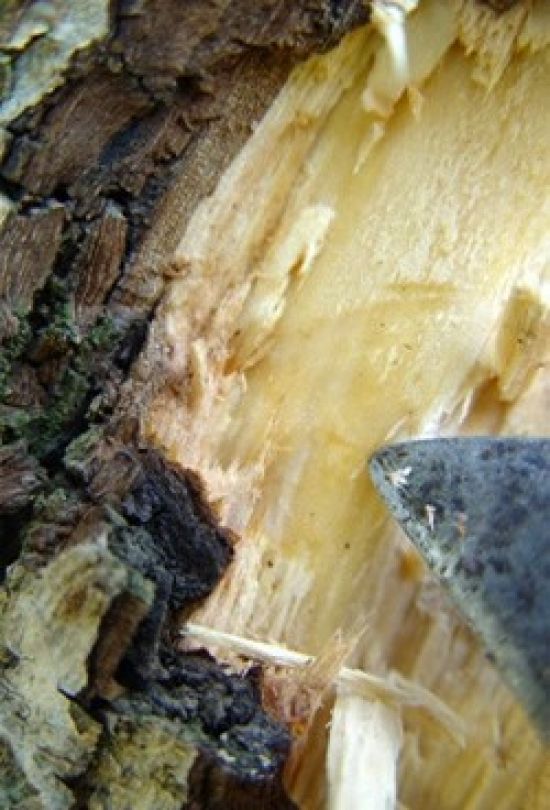This Agnote provides information on factors to consider for recovery from fire damage in fruit orchards
Original Agriculture Victoria Note Number: AG1376
Published: March 2009. Reviewed May 2013
Introduction
Fire damage in orchards can affect trees in various ways:
- Leaves are scorched and die, but limbs survive
- Trees are burnt and die
- Trees are affected by radiant heat, killing the cambium layer in the trunk and limbs
- Trunks are ringbarked by the vegetation burnt around the base of the tree
- Older trees can be damaged through embers lodging on the bark or in the crotch of the tree
- Root systems sometimes survive even though the tops have been killed
- Root systems are damaged by burning organic matter or heat in the rootzone.
- Fruit is scorched or baked
- Irrigation lines and emitters are destroyed
- Defoliated trees can have limbs sunburnt after the fire
Although an orchard affected by fire and radiant heat looks devastated, trees could have the potential to recover productivity. It all depends on the degree of heat generated by the fire passing over the orchard and the number of trees actually burnt out or damaged.
Assessing the damage

Figure 1: Healthy cambium of a fruit tree should be moist and a white, light tan or cream colour. Dead or severely damaged cambium will be dry and red/brown coloured.
If trees have been killed outright, assessing the damage is straight forward. If trees are still alive (or appear to be alive), it may take several weeks before it is possible to assess the full impact on an individual block.
The worst affected trees are most likely to be the border/edge trees closest to the fire front.
Just because a tree has been blackened and defoliated does not necessarily mean it is dead or going to die. It is important to take into account damage to the exterior of the tree (bark, limbs and roots) as well as the cambium layer (found just beneath the bark). The cambium is the layer of growing cells that produces the vascular system which conducts water and nutrient through the tree.
Cambium damage can be assessed by prising open the outer bark with a knife, axe or large screw driver. If the tissue under the bark is moist and a creamy, white or a light tan colour the cambium is still alive, giving the tree a chance for recovery. Dead or damaged cambium will be dry and reddish/brown. Extensive damage to the cambium will kill the tree.
Heat and fire stressed trees may respond to the fire damage by reshooting and perhaps even flowering. A decision can then be made as to how many trees have been killed outright and the viability of the whole block can then be assessed.
It is important to wait for regrowth to accurately assess tree viability. Trees that show signs of life may have been severely damaged on the side facing the fire and uneven regrowth may not provide a good opportunity to reform the tree in a balanced way.
Managing trees that show signs of life
If trees show signs of life (bark not shrivelling and new shoots starting to emerge), the irrigation system needs to be re-established so that trees can be irrigated and enable regrowth to mature before autumn leaf fall.
Trees may need to be protected from sunburn, particularly where defoliated. Trunks and large limbs can be painted with white wash or diluted water-based white paint to minimise sunburn problems.
Remaining fruit should be removed to prevent pest and disease build-up and unwanted stress on the trees.
Pruning should be delayed until regrowth has been established. Fertiliser should also be with held until there is sufficient growth to utilise it. It is essential not to force growth with extra fertiliser.
Long term viability of fire damaged trees
Experience from fire damage to South Australian orchards in the Ash Wednesday fires indicates that whilst trees may survive the fire damage they will take at least 2-3 seasons to return to cropping and may have seriously reduced potential. Trees may also continue to collapse from secondary problems after producing new shoots. This means that even though trees may survive fire damage, it may not be economically viable to try to continue production in a block.
Decisions about long term block viability and possible replacement strategies should be made in consultation with technical specialists and your insurance company. Decisions should take into account the severity of the damage through the block, tree age, variety, rootstock and planting densities. Younger trees, if not killed outright, may be easier to re-shape into productive trees and worth saving whereas older trees may not.
Key messages for fire affected fruit trees
- Assess whether the block is worth saving as soon as possible, based on the extent of damage and signs of regrowth.
- Assess if damaged trees still have a healthy cambium (layer of tissue beneath outer bark)
- If cambium is still alive and trees show signs of life, sunburn protection of trunk and limbs is essential
- If block is judged viable, repair or replace the irrigation system and irrigate as soon as possible.
- Remove any remaining fruit to prevent pest and disease build-up and unwanted stress on the trees
- With-hold fertilizer until there is sufficient growth to utilise it. Do not force growth with extra fertilizer
- Do not prune out damaged limbs until regrowth has been established.
Acknowledgements
David Williams (Tatura office), Henry Schneider (Tatura office), Angie Grills (Tatura office), Paul James (Rural Solutions, South Australia).
This Agnote was developed by Angie Grills, Farm Services Victoria. March 2009.
ISSN 1329-8062